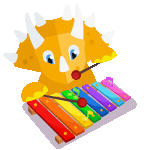Italian Days & Months: Interactive Calendar Exercises for Kids
Italian Days & Months: Interactive Calendar Exercises for Kids
Learning the days and months in Italian helps children talk about schedules, birthdays, and holidays. These interactive exercises combine songs, crafts, and calendar games to make ogni giorno e mese memorabile.
Italian Days of the Week
lunedì (Monday), martedì (Tuesday), mercoledì (Wednesday), giovedì (Thursday), venerdì (Friday), sabato (Saturday), domenica (Sunday)
Italian Months of the Year
gennaio (January), febbraio (February), marzo (March), aprile (April), maggio (May), giugno (June), luglio (July), agosto (August), settembre (September), ottobre (October), novembre (November), dicembre (December)
Exercise 1: Singing Calendar Song
Sing the Italian days song to the tune of “Frère Jacques” or another familiar melody, inserting each day in sequence. Repeat three times, encouraging echo responses.
Exercise 2: Day & Date Wheel Craft
- Cut two paper circles. Label the outer ring with days and the inner ring with numbers 1–31.
- Attach with a brad fastener so the inner wheel spins.
- Each morning, spin to today’s day and date; say aloud “Oggi è mercoledì 14 aprile.”
Exercise 3: Month Card Match
Create 12 cards—each with a picture representing the month (snowflake for gennaio, flower for maggio). Match cards to printed month names, reading each pair in Italian and English.
Exercise 4: Italian Calendar Hunt
Hide month cards around the room. Call out a month in Italian; kids find it and place it in order on the wall calendar. Then say the full date: “Ho trovato il mese di agosto: 15 agosto.”
Exercise 5: Dinolingo Interactive Lesson
Reinforce with a quick session in the Dinolingo Italian course. Use the calendar module to hear native pronunciation and practice placement on a digital calendar interface.
Quick Routine (5 Minutes Daily)
- Warm-Up: Chant days of the week once.
- Focus: Spin the date wheel and say today’s full date three times.
- Challenge: Ask “Qual è il prossimo giorno?” or “Qual è il mese dopo luglio?” for response.
Final Thoughts
Italian days and months become second nature when learned through song, play, and digital practice. Combining hands-on crafts with Dinolingo’s interactive lessons ensures children remember ogni data with confidence.
Sources
Start Learning a New Language Today!
Best Language App for Kids.
7-day free trial. Then only $19/month. Cancel anytime.
